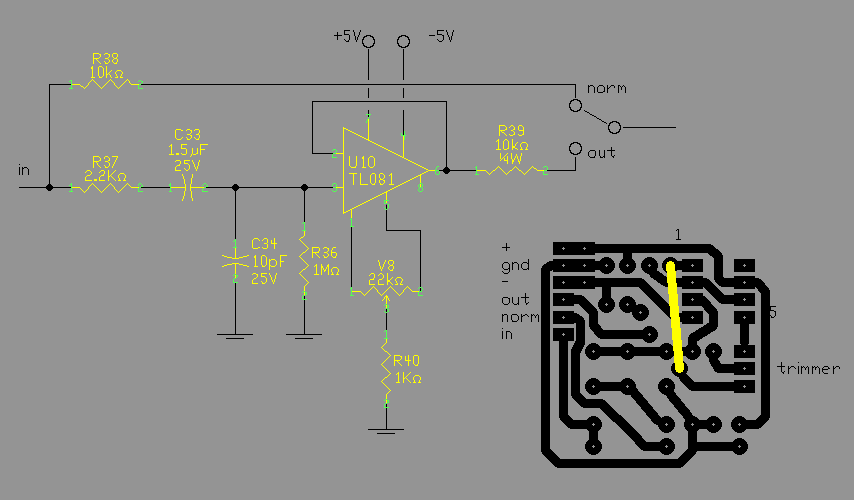
Some changes to Gary’s PI Detector...
Basically Gary’s detector is based (or similar) on “TWIN LOOP TREASURE SEEKER” from Robert and David Crone that i’ve realized 5-6 time, with some changes, so my mod. can apply with success.
In this circuit, i’ve tested a variable pulse rate, pulse TX, delay, time integrator and each time the main problem was the fine-tuning and the stability.
Increasing the PulseRate or the TX, in this project, impose that all must be retuned.
Actually i’m working at 1300-1500Hz with 60-80 micro sec. TX, this give a more more faster response, good sensitivity but... a great instability.
At this PulseRate the manual tuning, applied at the integrator, must be adjusted every 40-60 seconds and “shift” more and more and more...
My little circuit permit a stable and independent “Signal-Period” with some kind of “retuning” and not last, you can re-use and transform the old PI circuit.
In Gary’s PI remove the R30 and use the connection pad (... coming from integrator, at pin 6) to keep the signal “in” and put the “new circuit” out at the other pad (applied at the base for transistor-PNP). If you like, use a little switch (my example...) to change from “normal” to “motion” ad this give a good function.
The tuning.
Put the switch at “normal” and set for a fast-Toc-Tuning, you must ear 4-5 tocs per second.
At normal position, you can see, the R30 is replaced with an identical resistor.
Change the switch to “out-motion” and wait 3-5 second... your “toc” period is growing e became stable, it depends only from the trimmer setting (20k trimmer, rotate it to adjust the new tuning condition and wait some times, this tuning is only for the first time and never must be retuned because it’s fixed and coil-signal independent).
When the integrator detects some metals, in the “motion” position you ear only the delta signal for 4-6 seconds (but it's enough...). If you try to pin-pointing you must be faster because the “charge” of the capacitor can reach the –4V in some seconds... and the auto-retune (or the capacitor discharge) keep the same time.
This circuit give another benefit, some ground compensation that help at all situations.
Retune the circuit in normal position every 15-20 minuts so you keep the signal "in" in an acceptable range.
PS: my poor english... if someone undestand the 50% in this page i’m very happy!


Comment